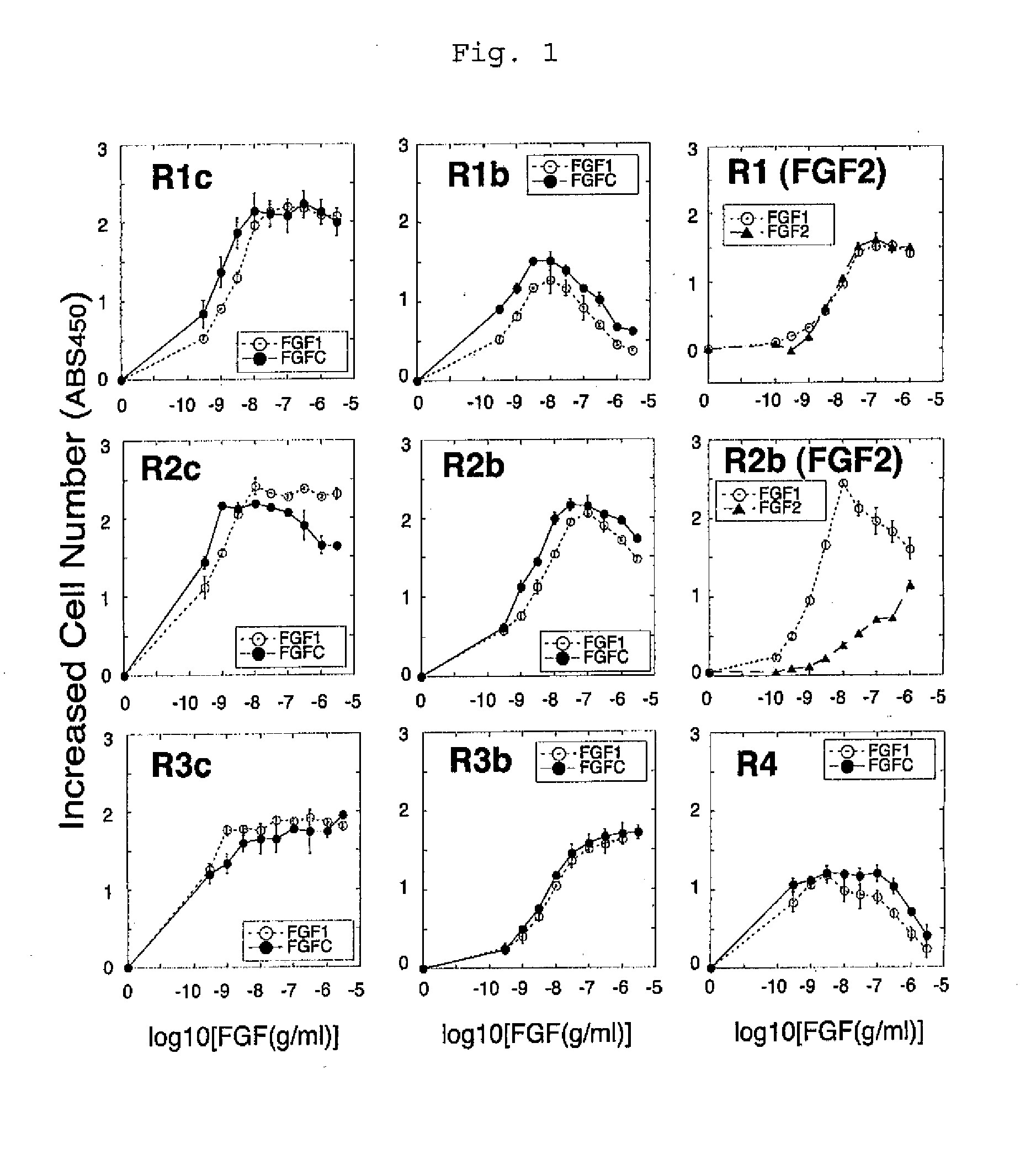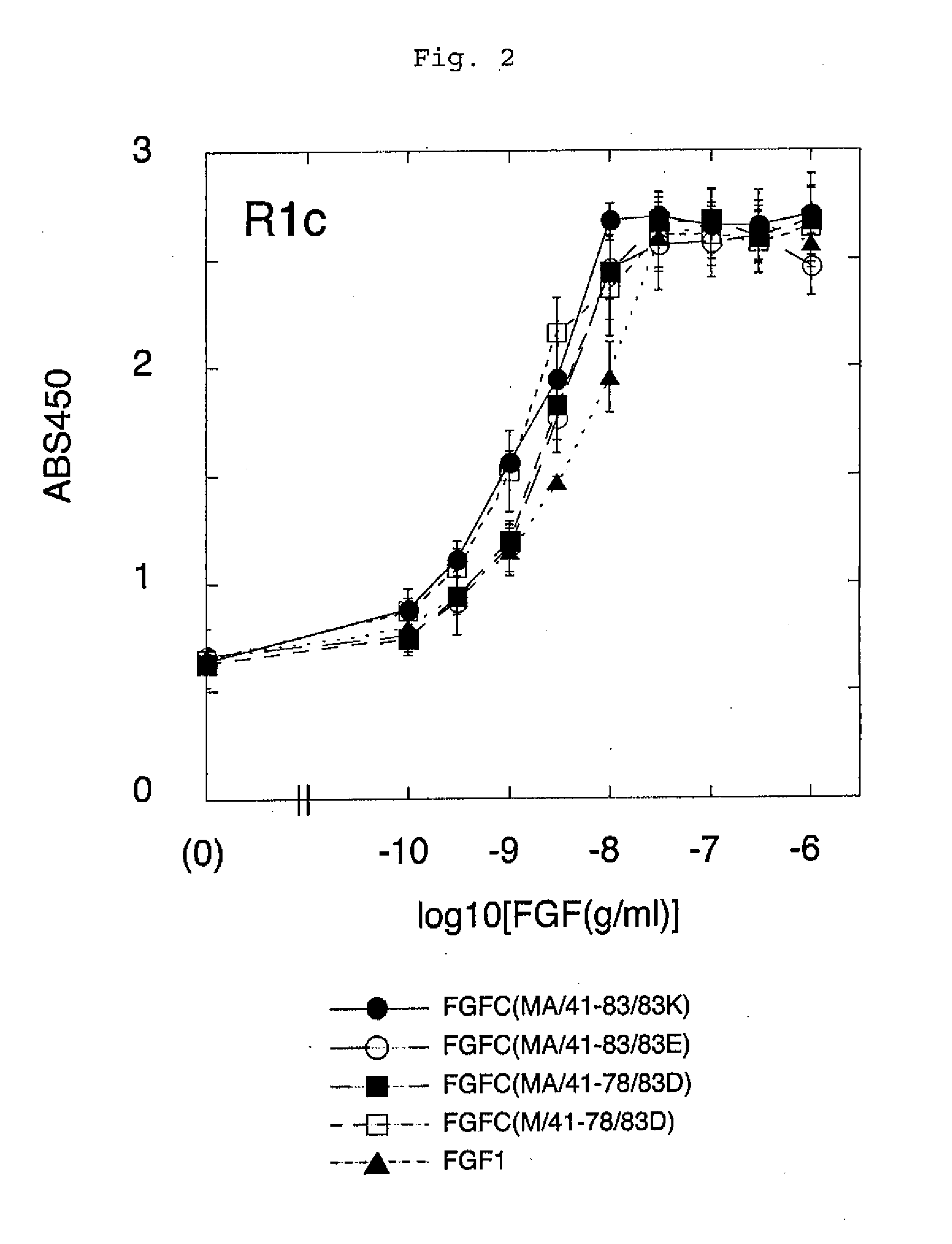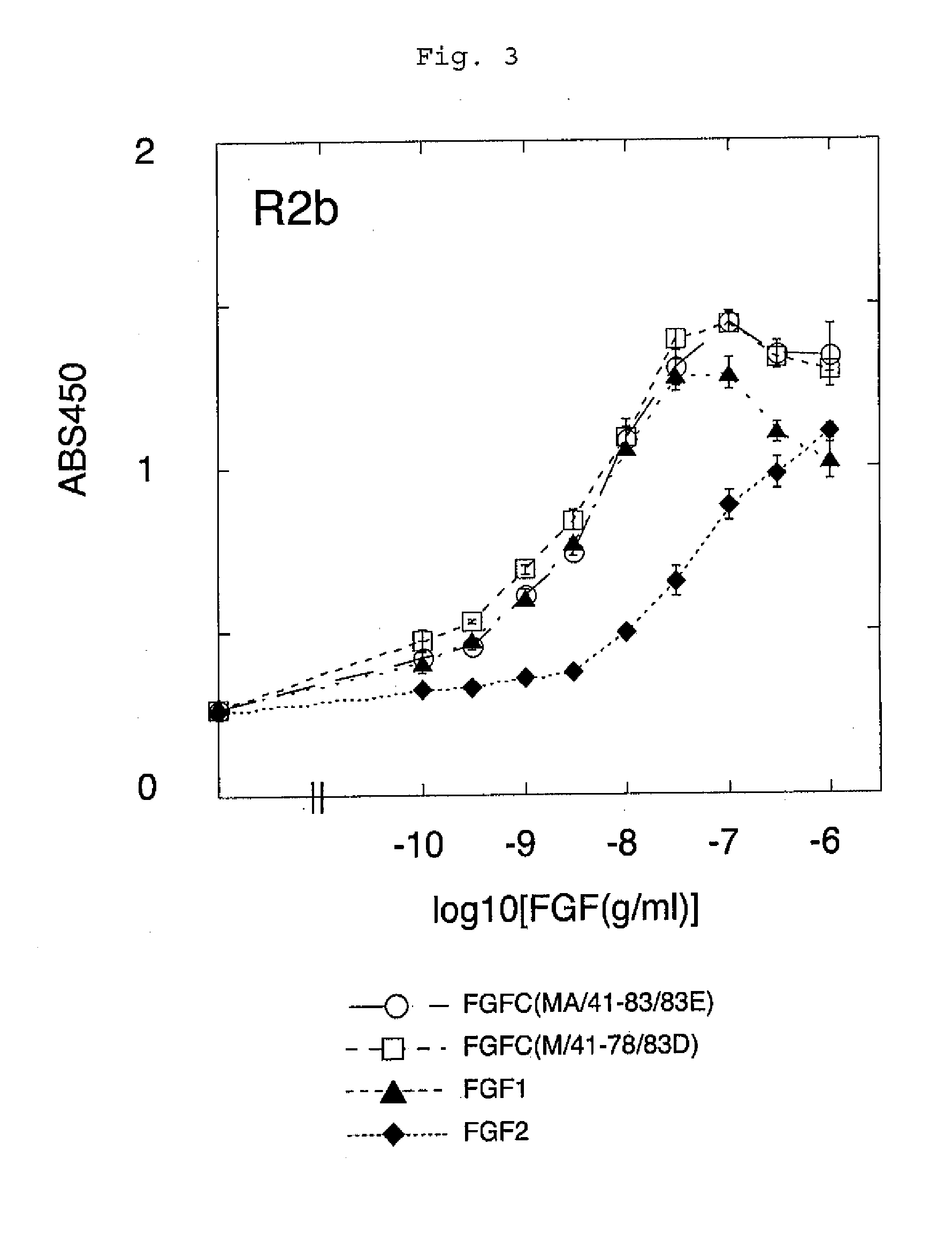Medicinal Compositions Containing Highly Functionalized Chimeric Protein
a technology of chimeric protein and composition, which is applied in the direction of drug composition, peptide/protein ingredient, extracellular fluid disorder, etc., can solve the problems of inability to obtain complete activity of chimeric protein, inability to treat wounds or intestinal inflammation, and great problems, so as to promote the proliferation of epithelial cells, promote wound healing, and promote the proliferation of fibroblasts and stem cells
- Summary
- Abstract
- Description
- Claims
- Application Information
AI Technical Summary
Benefits of technology
Problems solved by technology
Method used
Image
Examples
example 1
Receptor Specificity of Chimeric Protein that can be Measured Based on Cell Proliferation Promoting Activity (in the Presence of Heparin)
[0091](1-1) The receptor specificity of FGFC was compared with the receptor specificity of FGF1 and that of FGF2. A cell strain BaF3 which had neither endogenous FGF receptors nor endogenous heparan sulfate was used as a parent strain. The BaF3 cells were forced to express each of 7 representative subtypes of FGF receptor (FGFR1c, FGFR1b, FGFR2c, FGFR2b, FGFR3c, FGFR3b, and FGFR4) to produce respective cell strains. If the forcibly expressed FGF receptor is stimulated, the cells start to proliferate. Thus, receptor-stimulating activity can be measured by measuring the increased cell number. It is to be noted that such cell number was measured by colorimetrically assaying the activity of mitochondrial enzyme proportional to the cell number.
[0092]The BaF3 cells were suspended in an RPMI1640 medium containing 10% FBS, and the suspension was then dispe...
example 2
Receptor Specificity of Chimeric Protein that can be Measured Based on Cell Proliferation Promoting Activity (in the Absence of Heparin)
[0095]FGFC, FGF1 and FGF2 were examined in terms of receptor specificity. The experiment was carried out under almost the same conditions as those in Example (1-1). In this experiment, however, heparin was not added. Each point indicates the mean+ / −standard deviation (S.D.) of triplicate samples.
[0096]It was demonstrated that FGFC had the activity of stimulating almost all of the FGF receptor subtypes (FGFR1e, FGFR1b, FGFR2c, FGFR2b, FGFR3c, and FGFR4) even in the absence of heparin. In addition, FGF2 did not have such activity on any of the receptor subtypes examined (FGFR1c and FGFR2b) (FIG. 4).
[0097]The data shown in FIG. 4 was adjusted to have the same scale as that shown in FIG. 1, and a comparison was made with respect to the receptors. As a result, FGF1 lost a majority of its receptor stimulating activity unless heparin was added. In contrast...
example 3
Resistance of Chimeric Protein to Trypsin Decomposition (Concentration Dependence)
[0099](3-1) The resistance of FGFC and FGF1 to decomposition by trypsin was examined. Trypsin was added to 30 μl of PBS solution containing 500 ng of each FGF, resulting in various final concentrations. The obtained mixture was incubated at 37° C. for 1 hour, so as to allow protein decomposition. Thereafter, the sample was separated by SDS-polyacrylamide electrophoresis. After completion of the electrophoresis, the gel was treated with a CBB staining solution that would stain protein in proportion to its amount. Thereafter, optical scanning was carried out to quantify the amount of the remaining FGF protein that had not been decomposed (FIG. 5).
[0100]As shown in FIG. 5, approximately 80% of FGFC remained after the treatment with 0.01% trypsin. In contrast, FGF1 was completely decomposed. In addition, approximately 90% of FGFC remained after treatment with 0.001% trypsin. In contrast, only approximately...
PUM
| Property | Measurement | Unit |
|---|---|---|
| temperature | aaaaa | aaaaa |
| temperature | aaaaa | aaaaa |
| temperature | aaaaa | aaaaa |
Abstract
Description
Claims
Application Information
 Login to View More
Login to View More - R&D
- Intellectual Property
- Life Sciences
- Materials
- Tech Scout
- Unparalleled Data Quality
- Higher Quality Content
- 60% Fewer Hallucinations
Browse by: Latest US Patents, China's latest patents, Technical Efficacy Thesaurus, Application Domain, Technology Topic, Popular Technical Reports.
© 2025 PatSnap. All rights reserved.Legal|Privacy policy|Modern Slavery Act Transparency Statement|Sitemap|About US| Contact US: help@patsnap.com



